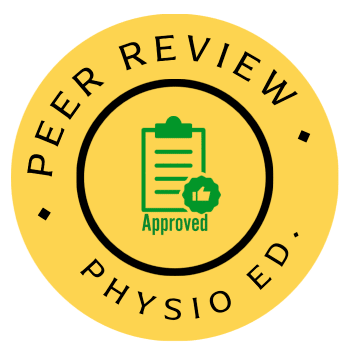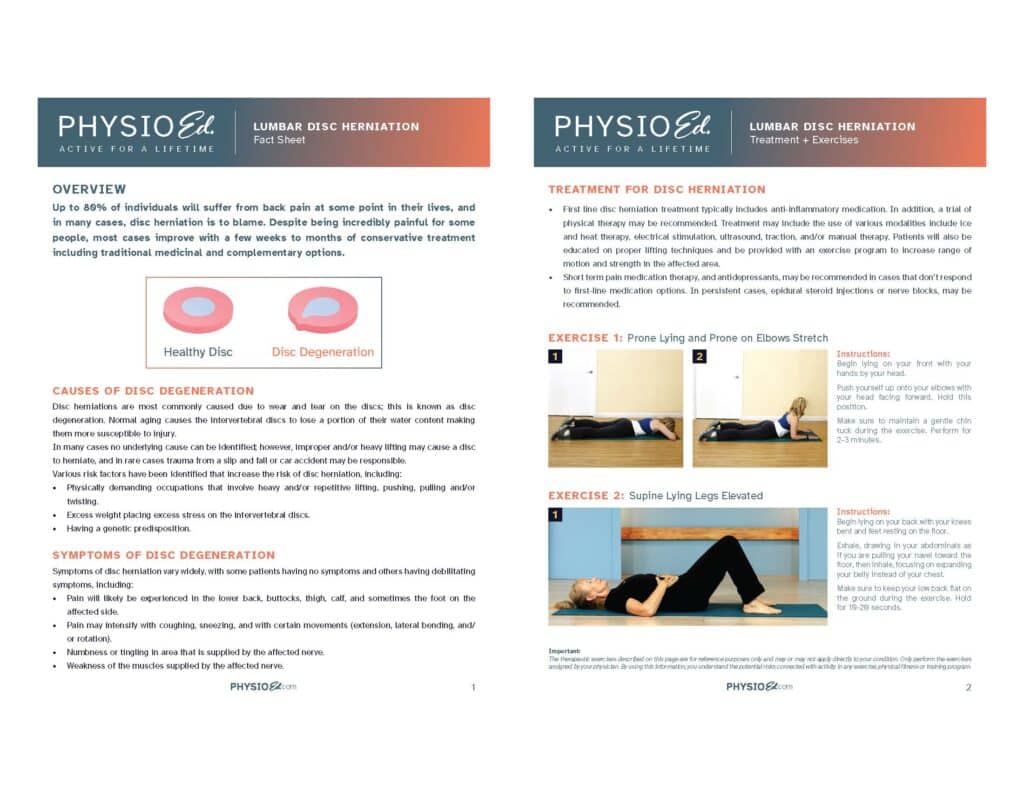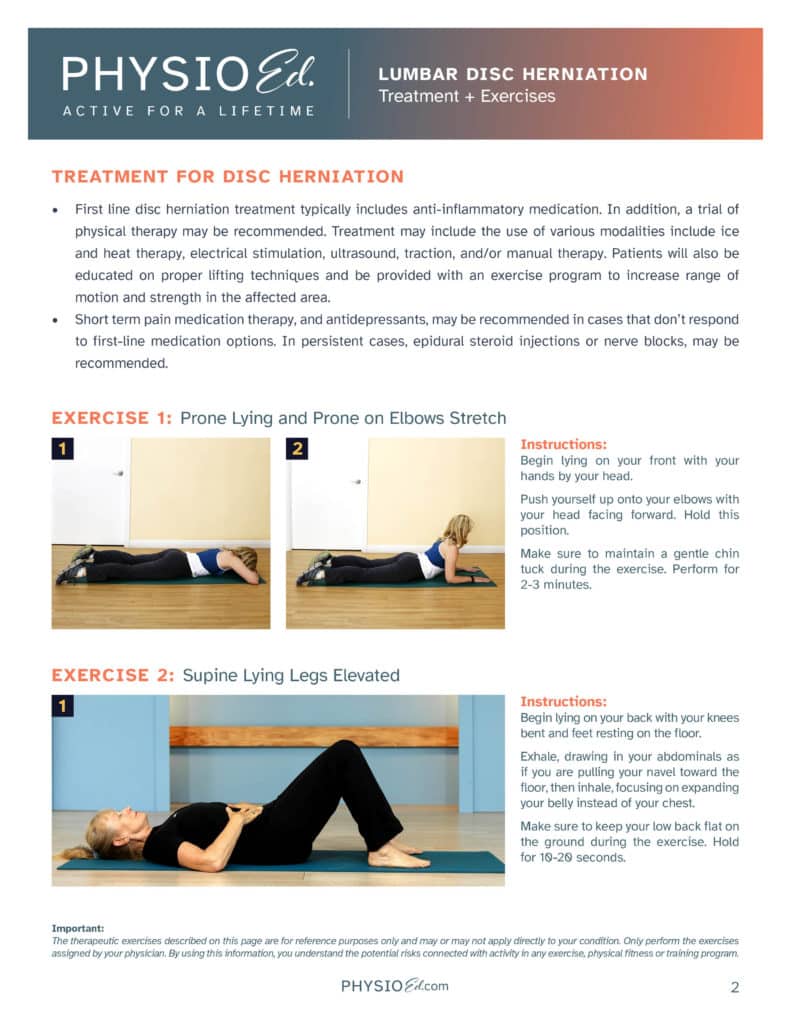Printable Lumbar Disk Herniation Exercises and Fact Sheets

This content has been reviewed and approved by Kathy Doubleday DPT, OCS.
- Overview
- Causes
- Symptoms
- Treatment
Up to 80% of individuals will suffer from back pain at some point in their lives, and in many cases, disc herniation is to blame. Despite being incredibly painful for some people, most cases improve with a few weeks to months of conservative treatment including traditional medicinal and complementary options.
Disc herniations are most commonly caused due to wear and tear on the discs; this is known as disc degeneration. Normal aging causes the intervertebral discs to lose a portion of their water content making them more susceptible to injury. In many cases no underlying cause can be identified; however, improper and/or heavy lifting may cause a disc to herniate, and in rare cases trauma from a slip and fall or car accident may be responsible. Various risk factors have been identified that increase the risk of disc herniation, including:
- Physically demanding occupations that involve heavy and/or repetitive lifting, pushing, pulling and/or twisting.
- Excess weight placing excess stress on the intervertebral discs.
- Having a genetic predisposition.
Symptoms of disc herniation vary widely, with some patients having no symptoms and others having debilitating symptoms, including:
- Pain will likely be experienced in the lower back, buttocks, thigh, calf, and sometimes the foot on the affected side.
- Pain may intensify with coughing, sneezing, and with certain movements (extension, lateral bending, and/or rotation).
- Numbness or tingling in area that is supplied by the affected nerve.
- Weakness of the muscles supplied by the affected nerve.
First line disc herniation treatment typically includes anti-inflammatory medication. In addition, a trial of physical therapy may be recommended. Treatment may include the use of various modalities include ice and heat therapy, electrical stimulation, ultrasound, traction, and/or manual therapy. Patients will also be educated on proper lifting techniques and be provided with an exercise program to increase range of motion and strength in the affected area.
Short term pain medication therapy, and antidepressants, may be recommended in cases that don’t respond to first-line medication options. In persistent cases, epidural steroid injections or nerve blocks, may be recommended.

Parkinson’s Disease
Parkinson’s Disease Welcome to our comprehensive resource page dedicated to Parkinson’s Disease – a complex neurodegenerative disorder that affects millions of people worldwide. Our aim
Exercise and Fitness
Exercise and Fitness No matter what your age, staying fit is important. This page is designed to provide you with the latest information, tips, and
Kathy Doubleday DPT, OCS
Dr. Kathy Doubleday is the co-founder of Physio Ed. and serves as its clinical director. She graduated from the nationally-acclaimed Physical Therapy Doctorate program at
Get Neck Help
Get a Free Printable 10-Day Neck Plan! 10-Day Plan Day 5 The FIX YOUR NECK Workshop The FIX YOUR NECK Workshop is a 100% online
Get OsteoFit
Get a Free Printable 10-Day OsteoFit Plan! 10-Day Plan Day 3 The OsteoFit Osteoporosis Workshop The OsteoFit Osteoporosis Workshop is a 100% online program providing
Expert Panels
Physical Therapist Advice Are you an older adult who is looking for advice on staying healthy and active? If so, you have come to the
Registration TOF
Register for free access to fitness classes and expert physical therapy advice. About Us Welcome to Physio Ed. At Physio Ed. classes are designed by


